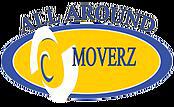Delaware Movers Top Rated
(888) 787-781342 Movers in Delaware
Page 1/3
Best Movers in Delaware, Right Here
When you are looking for local movers to move your furniture, make sure you've done your research. Sometimes a moving cost estimate you receive can be much more than you want to pay. When you read Delaware moving company reviews, you're becoming an informed consumer. Delaware interstate movers are ideal for those who need a reliable cross country mover or state to state moving company. To find the best Delaware interstate movers, check out
4 Telltale Signs that Your Movers Might Be ROGUE MOVERS
- When you ask for clarification on a charge, you’re met with a lot of jargon and no clear answer is given.
- The company isn’t fully licensed and insured by the FMCSA and the USDOT, meaning they are operating illegally.
- It’s difficult to get in touch with your movers, and when you do, they aren’t very friendly or personable.
- The crew shows up late, unpolished and disinterested in getting the job done right.
The Art of Choosing a Moving Company: How To Get the Best for Your Buck
- Check the peer reviews. See what customers have said
of this moving company Delaware performance in the past. - Call the main office. Did the person answer the phone pleasantly? Ask questions about the services you need. Is the representative knowledgeable and happy to help?
- Visit the office. Is everything clean, organized, and professional? Ask detailed questions about fees, how to prepare for the big day, and what timeline you should be following on your end, as a customer.
- Schedule an on-site estimate. Not only is this the most accurate form of getting a quote, but you’ll get a chance to gauge the estimator at work.
- Make sure that all charges are explained in detail, and that the quote given is a binding quote, which means the price won’t magically increase in a week.
4 Mistakes You Must Avoid When Moving Your Business
- Not alerting your staff. This is a no-brainer because of course, you’ll let your staff know about their new office location. However, if you aren’t clear with your employees about the actual date of the move, or if crews will be in the office to move a few preliminary things, this can cause confusion. Be sure to keep your staff in the loop every step of the way. The best way to do this is to closely follow an office relocation checklist.
- Not being organized. It’s crucial to delegate the moving duties to one person if you don’t want to handle them yourself. This person will be the go-to authority for everything related to your relocation. He or she can be in charge of correspondence with the moving company, as well as drafting checklists to make the process run smoothly.
- Not understanding how mistakes impact profits. We all know that mistakes happen, but not preventing some avoidable mistakes can cost companies a pretty penny when it comes to moving. Make sure to get all your ducks in a row and research your potential moving company, as well as how long you will need to be closed to allow for the move to take place.
- Not hiring professional help. It can be tempting to save money and go the DIY route, but the money you would save on not hiring movers might have to go to fix a mistake that an inexperienced person might make
during a DIY move. Do yourself (and your business) a favor and get assistance from those who understand this industry through and through.
The Top 3 Reasons You Need Professional Movers, According to Science
- Movers Delaware understand the task at hand. You may not want to trust all your worldly possessions to the care of strangers, but think about it: movers do this type of work every day for years. Their experience and skills speak for themselves when it comes to the care they will take with your things and moving you efficiently from A to B.
- Your move will be precise yet efficient. Professional movers are not only passionate about the type of job they
do, but also fully vetted and trained by the company that employs them. These professionals can sidestep surprise problems which can arise when you do the job yourself, and understand how to move effectively in a low amount of time. - You’re on the go. In this day and age, young people between the ages of 18 and 34 are always on the lookout for new opportunities elsewhere. Young adults in this age demographic are more connected than ever before with the world around them, so they are more likely to take that job opportunity across the country or move to a partner they met online in another state, just to name a few examples.
REVIEWS OF INTERSTATE DELAWARE MOVERS
Select a dependable moving company in Delaware to give you a free quote and transport your belongings safely within the USA. Choose your Delaware local movers, long distance movers, commercial movers, office movers, or residential movers by comparing Delaware moving company reviews. Click here to get your free moving quote and see moving companies in Delaware.
Movers By City in Delaware
Do you know?

- A moving company, removalist, or van line are all companies that help people as well as other businesses to move their goods from one place to another. With many inclusive services for relocation like packing, loading, moving, unloading, unpacking and arranging of items can all be taken care of for you. Some services may include cleaning the place and have warehousing facilities.
- According to the U.S. Census Bureau, 40 million United States citizens have moved annually over the last decade. Of those people who have moved in the United States, 84.5% of them have moved within their own state, 12.5% have moved to another state, and 2.3% have moved to another country.
- In the United States and Canada, the cost for long-distance moves is generally determined by a few factors. The first is the weight of the items to be moved and the distance it will go. Cost is also based on how quickly the items are to be moved, as well as the time of the year or month which the move occurs. In the United Kingdom and Australia, it's quite different. They base price on the volume of the items as opposed to their weight. Keep in mind some movers may offer flat rate pricing.
- Many people are familiar with this type of moving, using truck rental services, or borrowing similar hardware, is known as DIY moving. Whoever is renting a truck or trailer large enough to carry their household goods may obtain moving equipment if necessary. Equipment may be items such as dollies, furniture pads, and cargo belts to protect furniture and to ease the moving process.
- As most people have experienced, moving does involve having the appropriate materials. Some materials you might find at home or may be more resourceful to save money while others may choose to pay for everything. Either way materials such as boxes, paper, tape, and bubble wrap with which to pack box-able and/or protect fragile household goods. It is also used to consolidate the carrying and stacking on moving day. Self-service moving companies offer another viable option. It involves the person moving buying a space on one or more trailers or shipping containers. These containers are then professionally driven to the new location.
- There many reasons for moving, each one with a unique and specific reason as to why. Relocation services, employee relocation, or workforce mobility can create a range of processes. This process of transferring employees, their families, and/or entire departments of a business to a new location can be difficult. Like some types of employee benefits, these matters are dealt with by human resources specialists within a corporation.














